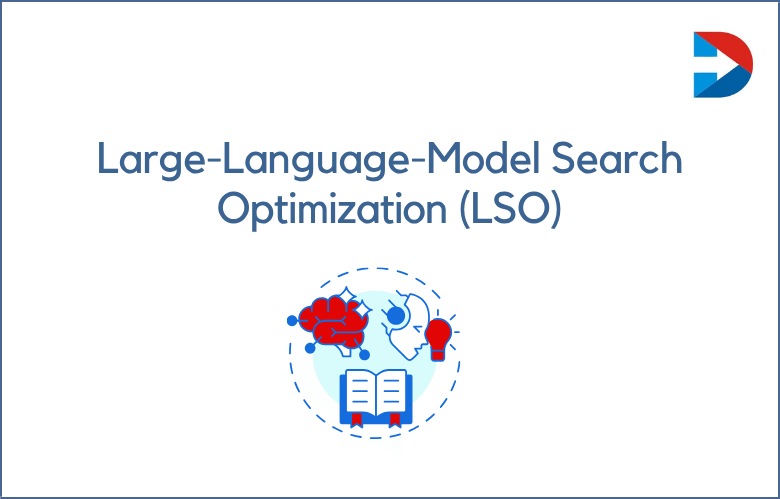
Account-based marketing (ABM) is an effective way to target potential customers and develop relationships with them.
By focusing specifically on the accounts most likely to convert, you can create a marketing strategy that capitalizes on those opportunities while ignoring less promising leads. We will discuss how to craft an effective ABM strategy.
What is Account-Based Marketing?
Account-based marketing (ABM) is a targeted approach to B2B marketing that focuses on engaging key accounts to generate more sales.
It uses personalized messaging and tactics to engage with prospects and customers to drive revenue. ABM isn’t just about targeting the right people; it’s also about understanding their needs and providing them with a tailored message that will resonate with them.
This type of targeting requires deep customer insights based on data gathered from multiple sources such as website visits, client conversations, email interactions, etc.
How does ABM Account-Based Marketing work?
ABM uses data from multiple sources to identify high-value accounts most likely to convert into paying customers.
Once these accounts have been identified, marketers can craft personalized campaigns tailored specifically for each account.
These campaigns should focus on delivering value regarding relevant content and offers while nurturing relationships between the business and its target customers.
With ABM, marketers can easily track the success of their campaigns by monitoring metrics such as lead conversion rate, engagement rate, clickthrough rate, etc., which allows them to tweak their strategies accordingly to maximize results.
How do you develop an effective Account-Based Marketing strategy?
Account-based marketing (ABM) has become increasingly popular in recent years thanks to its ability to target specific accounts and drive sales.
Developing an effective ABM strategy can be challenging. Here are some tips on creating a successful ABM strategy for your business.
Developing an effective Account-based Marketing strategy
Account-based marketing (ABM) is a strategy that focuses on targeting and engaging with specific accounts. This approach allows businesses to tailor their marketing activities to the needs of individual customers.
ABM delivers more targeted, personalized campaigns, which can result in higher conversion rates and revenue growth. However, developing an effective account-based marketing strategy is a challenging task. Let’s break down how to do it.
A comprehensive guide to developing an effective Account-Based Marketing strategy
Account-based marketing (ABM) is a strategic sales and marketing approach targeting specific, high-value accounts.
It involves developing relationships with key decision-makers in the target accounts and delivering highly personalized experiences.
ABM has been proven to be an effective way to drive growth and increase customer loyalty.
We will discuss developing an effective account-based marketing strategy.
Benefits of an Account-Based Marketing Strategy
Account-based marketing has proven to be an effective way for businesses to drive sales by engaging high-value accounts in a way that resonates with them.
Studies show that ABM campaigns have higher ROI than traditional B2B marketing campaigns due to the highly targeted nature of the approach.
Since ABM enables marketers to track metrics such as conversions and engagements more efficiently than ever, they can quickly make adjustments to maximize results from their efforts.
By leveraging data from multiple sources, ABM allows marketers to understand their target audience better, which means they can tailor their messaging even further for maximum impact!
Identifying Your Target Accounts
The first step in creating an ABM strategy is identifying your target accounts. Start by looking at your existing customer base and listing their common characteristics.
Then, use that list to identify other funds with similar characteristics. Once you’ve placed your ideal targets, it’s time to start crafting your messaging and content for those accounts.
Creating Content for Your Target Accounts
Once you’ve identified your target accounts, it’s time to create content tailored specifically for them.
This includes everything from website copy and emails to social media posts and videos. Make sure the content you create speaks directly to the needs of each account and addresses their pain points meaningfully.
Ensure all content is consistent across all channels so customers have a unified experience no matter where they interact with your brand.
Personalizing Your Messaging
Account-based marketing isn’t just about targeting the correct accounts; it’s also about personalizing your messaging so that each account feels like it’s being addressed directly.
To do this effectively, you need access to data about each tab, such as job title or industry type, and information like company size or revenue goals.
With this data, you can craft personalized messages for each account that speak directly to their needs and goals—and increase the likelihood of conversion.
Utilize Multiple Channels
Once you have identified your target accounts and created relevant content tailored specifically for them, it’s time to get the word out about your product or service by utilizing multiple channels such as email campaigns, social media posts, webinars, etc.
This will help ensure your message reaches potential customers and keeps them engaged with your brand.
Using multiple channels will also allow you to track user behavior and adjust your strategy, if necessary, based on user feedback or data collected from past campaigns.
Get To Know Your Audience
Once you have identified your target accounts, it’s time to get to know them better. Researching their industry sector and understanding their goals will help you develop a tailored approach for each account.
Knowing the challenges and the solutions they need means you can create content that resonates with them and encourages them to take action.
Set Out Clear Goals & Objectives
Developing clear goals and objectives for each account is essential to create an effective ABM strategy.
Setting out key performance indicators (KPIs) helps ensure that all team members work towards the same goal and helps keep everyone focused on achieving results.
It also allows you to monitor progress regularly to make changes quickly before it’s too late.
Define Your Goals and Objectives
You must define your goals and objectives before building your ABM strategy. What do you want to achieve through your ABM efforts?
Are you looking for more sales, or are you trying to build brand awareness? Once you have identified what success looks like for your company, you can start mapping out a plan of action that will help you get there.
Develop Personalized Experiences
Personalization is critical to successful account-based marketing. You must create experiences that resonate with each customer so they feel their needs are being addressed directly.
To effectively create different content streams for each target account type, including emails, webinars, whitepapers, case studies, or other forms of content tailored specifically for each persona.
Consider using automated tools such as Adwords remarketing campaigns or customized landing pages for better engagement with leads from targeted accounts.
Analyze Performance Data
Once your ABM strategy has been implemented, you must track its performance over time to identify areas of improvement and adjust accordingly if necessary.
Look at conversion rates and customer lifetime value (LTV) across different channels to determine which tactics work best for each target audience segment.
This data can inform future campaign decisions and optimize ROI on future investments into ABM initiatives.
Conclusion
Account-based marketing can target potential customers only if you have an effective strategy.
By identifying your target accounts, crafting tailored content, and personalizing your messaging with relevant data points, you can develop a successful ABM strategy to help grow your business exponentially!
With these steps in place, you’re ready to start developing relationships with key stakeholders at potential accounts and increasing conversions down the line!
How to Develop an Effective Account-Based Marketing Strategy?: FAQs
What Is Account-Based Marketing (ABM)?
Account-based marketing (ABM) is a strategic approach that focuses on identifying high-value target accounts and tailoring marketing efforts specifically for each rather than casting a wide net with generalized campaigns.
Why Is ABM Considered More Effective For B2B Marketing?
ABM aligns marketing and sales to focus on high-value clients, leading to better personalization, improved conversion rates, and higher ROI than traditional lead-based marketing.
How Do You Identify Target Accounts For ABM?
Target accounts are identified based on firmographic data such as company size, industry, revenue, decision-making structure, and alignment with your product or service offering.
What Role Does Personalization Play In ABM?
Personalization is at the core of ABM, where content, messaging, and campaigns are customized to resonate with each target account’s specific pain points and goals.
How Do You Align Sales And Marketing In ABM?
ABM requires close collaboration between sales and marketing teams to define account goals, share insights, co-develop strategies, and measure results jointly for seamless execution.
Which Channels Work Best For ABM Campaigns?
Email, LinkedIn, personalized landing pages, webinars, direct mail, and account-specific content hubs are commonly used channels for ABM campaigns.
Can ABM Be Scaled For Multiple Accounts?
Yes, ABM can be scaled using tiers of strategic one-to-one campaigns for top accounts, one-to-few for similar account clusters, and one-to-many using automation tools for broader targeting.
What Tools Support ABM Strategy Execution?
Platforms like HubSpot, Demandbase, Terminus, Engagio, and LinkedIn Sales Navigator assist in executing, tracking, and optimizing ABM efforts across multiple accounts.
How Do You Measure ABM Success?
Key metrics include account engagement, pipeline velocity, deal size, conversion rates, and overall revenue growth from target accounts.
What Types Of Content Work Best For ABM?
Content such as case studies, whitepapers, custom demos, solution briefs, and personalized videos tailored to account challenges are highly effective in ABM.
Is ABM Only Suitable For Large Enterprises?
No, ABM is effective for companies of all sizes, especially those with a limited set of high-value clients or a focused B2B offering.
How Does ABM Improve Customer Relationships?
By focusing on each account’s unique needs and offering tailored solutions, ABM fosters trust, loyalty, and long-term partnerships.
What Are The Common Mistakes To Avoid In ABM?
Mistakes include poor account selection, lack of personalization, misalignment between teams, and focusing on too many accounts without proper segmentation.
How Long Does It Take To See Results From ABM?
ABM is a long-term strategy; depending on deal cycles, account engagement, and execution consistency, noticeable results can take 3 to 6 months.
How Can You Prioritize Accounts In ABM?
Accounts should be prioritized based on potential revenue impact, strategic fit, engagement signals, and buying readiness.
What Is The Difference Between ABM And Traditional Demand Generation?
Traditional demand generation targets a broad audience to attract leads, while ABM targets specific accounts with customized outreach for higher-value conversions.
Can ABM Be Used For Customer Retention And Upselling?
ABM is not just for acquisition; it can deepen existing relationships, support cross-selling, and boost customer lifetime value.
How Does Data Play A Role In ABM Strategy?
Data is essential for identifying target accounts, personalizing content, tracking engagement, and optimizing campaigns based on performance metrics.
How Can You Create An ABM Roadmap?
An ABM roadmap includes steps such as defining ICP, selecting target accounts, aligning sales/marketing, developing personalized campaigns, and continuously measuring results.
What Are Some ABM Best Practices For Beginners?
Start with a small set of high-potential accounts, ensure tight collaboration with sales, leverage analytics, use personalization tools, and continuously refine your approach.




